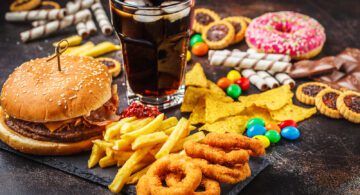Deceiving Body Fat Composition Testing
People often ask me what my percentage of body fat I was when I became Mr. Universe. The answer is 3%, but that was probably for no more than a couple of days, after which it would go back to somewhere between 5-7%. But assuming you’re not a professional body builder, that percentage would be unrealistic for you.
We all need some fat just to:
- Maintain cellular structure
- Regulate body temperature
- Cushion and insulate our organ
- Store the energy we need simply to stay alive.
The table below indicates the average range of body fat for men and women in various categories.
| Category | Women | Men |
| Vital Fat (necessary to maintain life) | 10-12% | 3-5% |
| Athlete | 14-19% | 6-13% |
| Fit | 20-24% | 14-17% |
| Average | 25-31% | 18-25% |
| Obese | 32% or more | 26% or more |
Note that women naturally have a higher percentage of body fat than men—about 6-7% more. By nature, a woman’s body is made to protect her potential fetus. As a result, women have more enzymes than men for storing fat and fewer enzymes for burning fat. Furthermore, the estrogen in a woman’s system activates fat-storing enzymes and causes them to multiply.
That said, however, the majority of women store fat below the waist, in their buttocks, hips, thighs, and breasts, whereas men store it primarily in their abdomen, lower back, and chest. Many studies have shown that the woman’s pattern of fat storage is generally healthier than the man’s, and that an excess of abdominal fat indicates an increased risk for developing heart disease.
If You Want to Learn Your Percentage of Body Fat…
Although it isn’t necessary for following any nutritional plan, it can be both interesting and useful to determine your percentage of body fat before you begin.
You can do this by using calipers designed for the purpose. If you wish, you can buy the calipers (the Acumeasure brand costs about $20.00), follow the instructions, and take the measurements yourself, or—my preference—you can go to a gym and have it done professionally. The American College of Sports Medicine has stated that skinfold measures, when performed by a trained, skilled, tester, are very accurate. For the sake of keeping you safe from confusing and discouraging methods of testing out there, I have outlined below, several testing and devices used to determine body fat composition and my recommendations for using them.
Measuring your body fat before you start the weight loss plan and then at intervals as you progress can be very validating and motivating, as you’ll see the percentage decline.
The Good, The Bad and The Ugly
Water Tank
Also called hydrodensitometry testing, this involves getting into a tank filled with water. Based on the amount of water you displace, your body density and body fat can be calculated. VERY GOOD!
My take on the water tank: It’s the most accurate assessment and is recommend by most experts and physicians.
DEXA Scanning
The DEXA Scanning is a “dual energy X-ray absorpitometry” and is the same imaging technology doctors use to measure bone density to determine osteoporosis risk. Throughout the test, you lie down on an X-ray table for a few minutes while the scanner measures your body fat, muscle, and bone mineral density. This allows to identify fat deposits in specific body regions.
My take on DEXA scanning: It’s one of the most accurate methods I’ve used. I recently had one done by my good friend Dr. Daniel Mihalyi at the Quality of Life Medical research Center in Tucson. Both bone density and body fat composition were measured and I was very pleased. VERY GOOD!
Skinfold Calipers
Health clubs often offer the skinfold test. You get pinched with a measuring device at several points on the body, like thighs, hips, and upper arm.
My take on skinfold test calipers: It’s all depending on the skills of the individual giving you the test. The skinfold test is reasonably accurate, but only if the tester is experienced. My opinion is if the person is inexperienced and not using the recommended “Lange Calipers” It will be unreliable. This method is rarely done professionally; it is my observation that sales people at health clubs are the one performing the skinfold caliber test. Beware! GOOD!
The BMI Test
The BMI test is a simple calculation, using your height and weight., it was developed using large, population-based studies. Though it doesn’t address percentage of body fat or muscle, it helps health care professionals assess which patients may be at risk of health problems linked to being overweight.
My take on the BMI test: It’s good for assessing health risks but doesn’t measure body fat percentage. Being short, or muscular, can lead to inaccurate results. NOT GOOD FOR MEASURING BODY FAT!
Body Fat-Measuring Scales
Traditional bathroom scales with an additional tool called “Bioelectrical impedance analysis.” The scales send a safe electrical current up through your body to determine the amount of fat body mass and lean body mass.
My take on body fat measuring scales: Convenient, but not accurate. They rely too much on hydration and are confusing. If you are not following the guidelines on how to weigh yourself, they will lead you to total discouragement. BAD!
The handheld version of the Bioelectrical impedance analysis.
The validity of this method, however, in body fat composition assessment of overweight women is not known.
My take on it: This tool is very deceiving; it had me at 28% when a few days earlier I was 10% on both the underwater weighing tank and the Lange calipers. This is the favorite tool used by “warehouse” like gyms. Beware as it could deceive you too and destroy your motivation. VERY BAD!


























